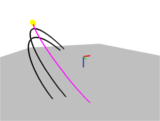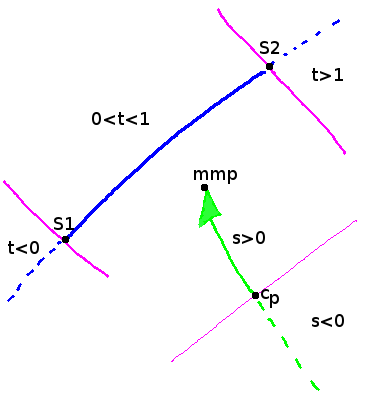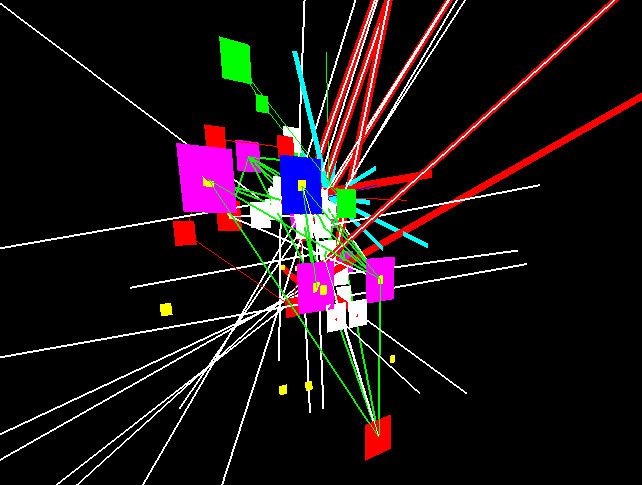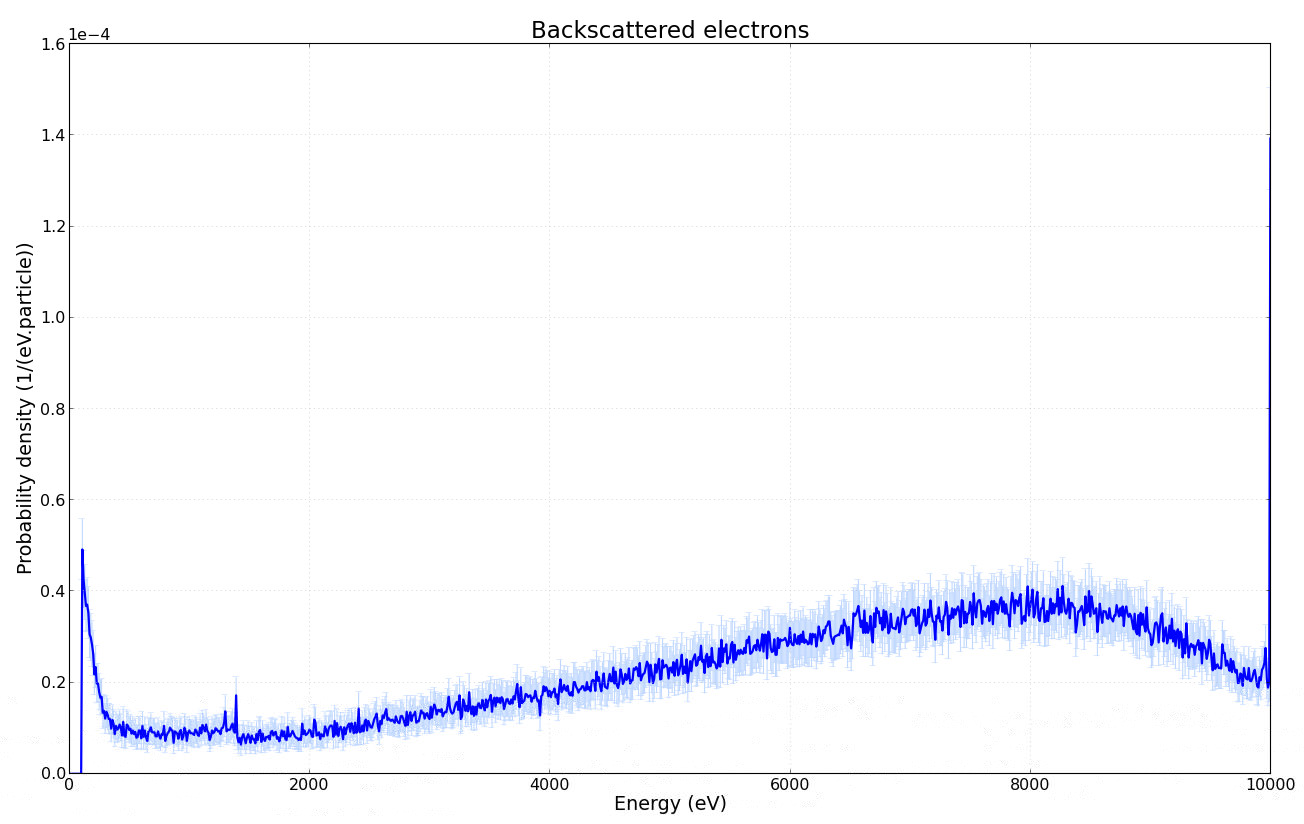Quadtree extended
02.02.2018

Basic manipulation (deletion and relocation of points) as well as gaining information (fetching points from a node) of a quadtree ...
→
read more

A simple and brief tutorial for Quadtrees ...
→
read more
Taking screenshots with OpenGL
05.12.2016

Creating Screenshots with C++ and OpenGL. Doesn't sound that difficult ...
→
read more
Let there be light!
16.09.2016

Our precious planet Earth is performing a complex dance around the sun. Determination of the position of the sun, i.e., azimuth and elevation angle for a given point on the surface of Earth is therefore rather complicated.
→
read more
Collision course II
28.04.2016

A ray is propagating towards a polygon in 3d - is the ray going to collide with the polygon or not?.
→
read more
Collision course
23.04.2016

My implementation of a GJK-algorithm, which is used to test convex shape in 2d/3d for collision.
→
read more
A short introduction to particle simulation software
09.05.2013
Particle simulation in physics is a quite huge and important part.
The ambition of these programs is to shoot charged particles (electrons, photons...), photons and other particles on a surface under a certain angle.
The particles interact with the surface, generate other particles (e.g. secondary electrons), exit the surface or become assimilated by the structure.
These informations are the information we need from the program. For example we want to know how many particles are backscattered from the incident amount of particles we shot on the surface.
By dividing the backscattered particles through the total amount of incident particles we get the backscattering coefficient.
These programs are usually montecarlo simulations. Some of them are quite old and programmed in fortran.
The programs so far:
casino
windows program(runs under linux with wine)
no real support(from the creators) - e.g. no response per mail
no manual :(
new version can be quite buggy from my experience
easy to use and install
The developers haven't answered my questions and because of that and the lack of a manual interpreting the results from casino can be quite hard - get your snow globe ready :)
penelope
Penelope(PENetration and Energy LOss of Positrons and Electrons) is a fortran program.The access to the source code is prohibited by the Nuclear Energy Agency.
To access the program an apply must be made. I don't know if everyone can do this but every (bigger) university should be able to to this.
Thankfully there is a GUI (graphical user interface) called pyPENELOPE available. pyPENELOPE is written in python. With this GUI the program penelope can be operated without access to the penelope source code.
More information about pyPENELOPE:
source code of penelope is not open source - adaption of the code is not easy
penelope is written in fortran
support for (pyPENELOPE) is awesome
documentation for pyPENELOPE is quite good
The access (source code and documentation) to penelope is not really good because of the NEA and the age of the program.
The code is still up to date (last version 2011) but written in fortran. To set a simulation in penelope everything must be written in textfiles.
Because of that working with penelope is not too easy. But with the GUI pyPENELOPE these settings are easy because pyPENELOPE does that for you with a GUI.
Access to the source code is not necessary. The disadvantage is, if you need something pyPENELOPE can't you need the prohibited source code.
With pyPENELOPE you can run a PENEMPA-simulation: many diagrams and plots are generated (backscatter-graphs, transmission coefficient...) or you can run a SHOWER-simulation:
The result of such a simulation is a textfile which contains all the trajectories of the simulated particles. From this file you can calculate many stuff (but must be programmed by hand)
Energies from ~keV to ~MeV can be simulated.
The code of penelope has been implemented in Geant4
A pyPENELOPE output looks like this:

The picture shows the backscattered electrons. The incident simulated incident energy was 10 keV and the electrons were "shot" on the surface under an angle of 55 degree.
In the picture the label "energy" refers to the energy a particle has when exiting the surface (backscattered)
Geant4
A toolkit for particle simulation developed by the people working at cern. The main purpose was the simulation of high energy particles in the detectors of the LHC.
The range of energy that can be simulated is quite huge. Usually for high energies. For low energies penelope has found its way into the code of Geant4.
Geant4 is written in C++ :)
it's huge - to run a simulation you need some time reading and arranging the program
needs time
written in C++
open source :)
there is a lot of documentation
Geant4 is the ultimate thingy. But you will need time to get used with the program.
conclusion
Working with pyPENELOPE is quite accurate. With a limited amount of time i would recommend pyPENELOPE. Geant4 if you have a some time to invest into the program or if you are really interested :)
Geant4 is for
high energy physics simulation and penelope for
low energy simulations


 Basic manipulation (deletion and relocation of points) as well as gaining information (fetching points from a node) of a quadtree ...
Basic manipulation (deletion and relocation of points) as well as gaining information (fetching points from a node) of a quadtree ...
 A simple and brief tutorial for Quadtrees ...
A simple and brief tutorial for Quadtrees ...
 Creating Screenshots with C++ and OpenGL. Doesn't sound that difficult ...
Creating Screenshots with C++ and OpenGL. Doesn't sound that difficult ...
 Our precious planet Earth is performing a complex dance around the sun. Determination of the position of the sun, i.e., azimuth and elevation angle for a given point on the surface of Earth is therefore rather complicated.
Our precious planet Earth is performing a complex dance around the sun. Determination of the position of the sun, i.e., azimuth and elevation angle for a given point on the surface of Earth is therefore rather complicated.
 A ray is propagating towards a polygon in 3d - is the ray going to collide with the polygon or not?.
A ray is propagating towards a polygon in 3d - is the ray going to collide with the polygon or not?.
 My implementation of a GJK-algorithm, which is used to test convex shape in 2d/3d for collision.
My implementation of a GJK-algorithm, which is used to test convex shape in 2d/3d for collision.
 The picture shows the backscattered electrons. The incident simulated incident energy was 10 keV and the electrons were "shot" on the surface under an angle of 55 degree.
In the picture the label "energy" refers to the energy a particle has when exiting the surface (backscattered)
The picture shows the backscattered electrons. The incident simulated incident energy was 10 keV and the electrons were "shot" on the surface under an angle of 55 degree.
In the picture the label "energy" refers to the energy a particle has when exiting the surface (backscattered)